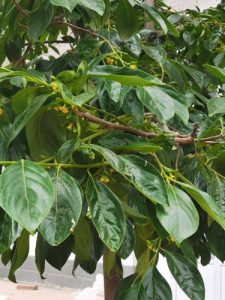Diospyros Ebenum seed

Diospyros ebenum
A popular tree, the ebony tree, referred to as “Ceylon ebony” for the trees found in Sri Lanka, is also found in south India and Indonesia. The scientific name of the plant is Diospyros ebenum and it belongs to the family Ebenaceae. Laws in both Sri Lanka and India prohibit the international trade of this particular wood. Known also as “Ebony” in English, this plant is used in the timber industry and it was a popular type of wood in areas where carpentry is practiced on a large-scale basis.
The ebony tree reaches 100 feet but a majority of the ebony trees of Sri Lanka are much shorter than this figure. As its name suggests, its wood is black or grey-black in colour. The fruit of this species of plant is 2 cm in diameter and it is regarded as a type of berry. Parts of the tree is also used for medicine in certain areas of Asia. According to BIOTIK, a project that provides information on biodiversity and taxonomy, Ceylon ebony is a type of canopy tree that grows in dry evergreen forests. These trees can be easily seen at Udawalawe National Park, especially along the river bank.
Buds
Flowers and shoot buds are found in the leaf axils. Buds of the male flowers are clustered in short cymes. Howard and Norlindh [19] observed densely pubescent young buds and less pubescent older buds on the specimens collected by Koenig during his trips to Ceylon; however, no flora guide known to the author makes this observation.
Leaves
The leaves are alternate, oblong to elliptic, 6–10 cm long and 3–5 cm broad, thinly coriaceous, glabrous with a rounded to acute base. The apex is (sub)acute to obtuse and the veins are minutely reticulate, raised and conspicuous on both surfaces, while the mid-vein is clearly visible. The petiole is up to 0.5 cm long [5, 26]. Fresh leaves are bright green and shiny
Fruits
The fruits are globose berries with a short, apical break, measuring 1.5–2 cm across. The calyx forms a shallow wooden cup and is reflexed [5, 26]. Each fruit contains 3–6 seeds. When old, the fruit dries and turns grey.
Wood
A clear distinction can be observed between the sapwood and heartwood of the species, although the relative proportions of both vary greatly. The proportion of heartwood in the trunk declines with increasing soil quality [6]. The trunks of individuals growing on deep soil have 14–35 % heartwood while data for rocky soil are not available. The light coloured, soft sapwood is not of much use. D. ebenum is the only species that produces entirely black heartwood, but the process of pigmentation is slow and irregular. Howard and Norlindh mention that, during his visit, Koenig was shown by a local forester how the status of pigmentation was checked by drilling through the sapwood into the heartwood [6, 20]. The heartwood, if fully pigmented, is absolutely dark (jet black) and produces very fine sawdust. According to Broun, dried wood has a weight of 1.2–1.4 t/m3 [6]. Dahms [9] provides the same figures for his general description of wood properties for black wood-producing Diospyros species. As a detailed description of other wood properties for D. ebenum could not be found by the authors of this monograph, Dahms description is used here. The black heartwood can show a deep blue tone and the pores are often filled fully with black pigments, which makes them almost invisible on the surface. The orientation of the fibres is irregular. Figures for the chemical composition of the wood are available only for Diospyros celebica, which has 41 % pure cellulose, 48 % lignin and 17 % pentose.
Common Name
Span.: El ébano French: Ébène German: Ebenholz Hindi: Kendhu Tamil: Karunkaali, Solaikarimaram, Thumaraam, Velleithuvarai, Vellathovarai Telugu: Tuki
